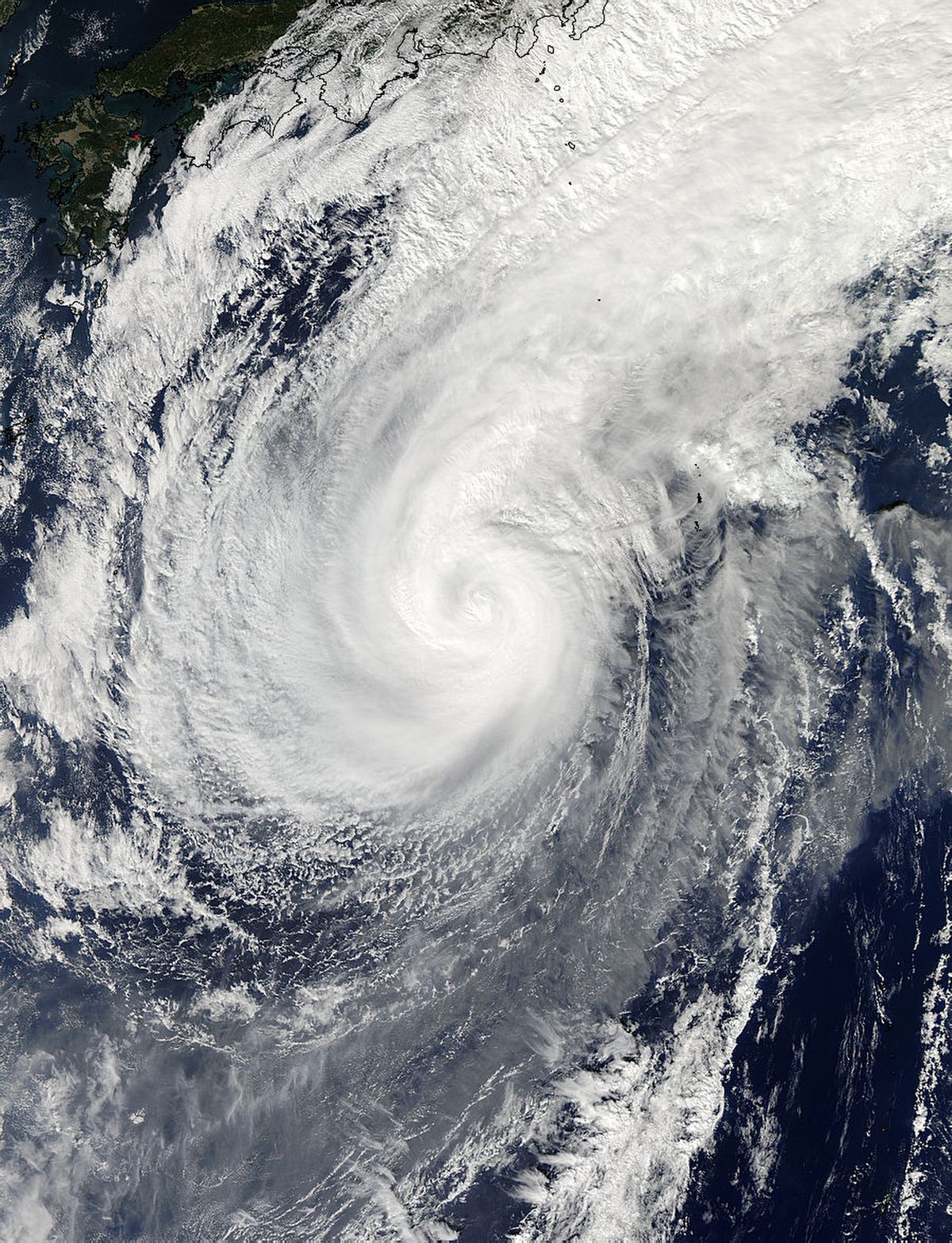Super Typhoon Nuri, a storm that is making its way across the Bering Sea, has quickly solidified its reputation as the most powerful storm to ever hit the region. The bigger the storm is, the lower the air pressure. Surface weather stations captured data indicating that Nuri reached 924 millibars (mb), breaking the previous record of 925 mb set in 1977 in Dutch Harbor, Alaska.
Nuri's air pressure dropped so rapidly that it became a "bomb." Mashable's Andrew Freedman explains the meteorological phenomenon as it relates to the storm's progression:
Surface weather data gathered from stations well away from the storm center was impressive, with wind gusts close to 100 miles per hour at Shemya Island in the Aleutians, and a buoy in the Bering Sea recording a low pressure of 929 mb. The minimum air pressure in this storm dropped extraordinarily fast, which qualified this storm as a 'bomb,' for a meteorological term known as "bombogenesis," which means a storm whose air pressure drops by at least 24 mb in 24 hours.
The University of Wisconsin's Space Science and Engineering Center made the video below which shows the evolution of the storm (and also reveals Earth's weather patterns to be pretty magnificent). Nuri is the green squiggle that looks like an "S."



Shares